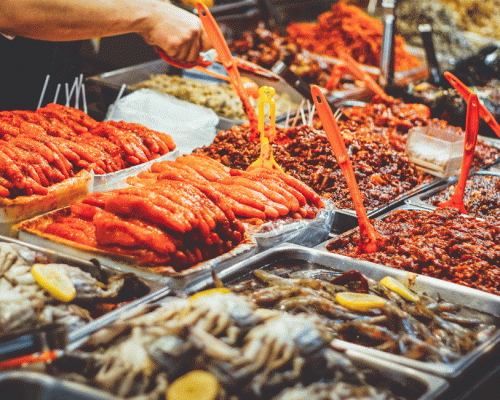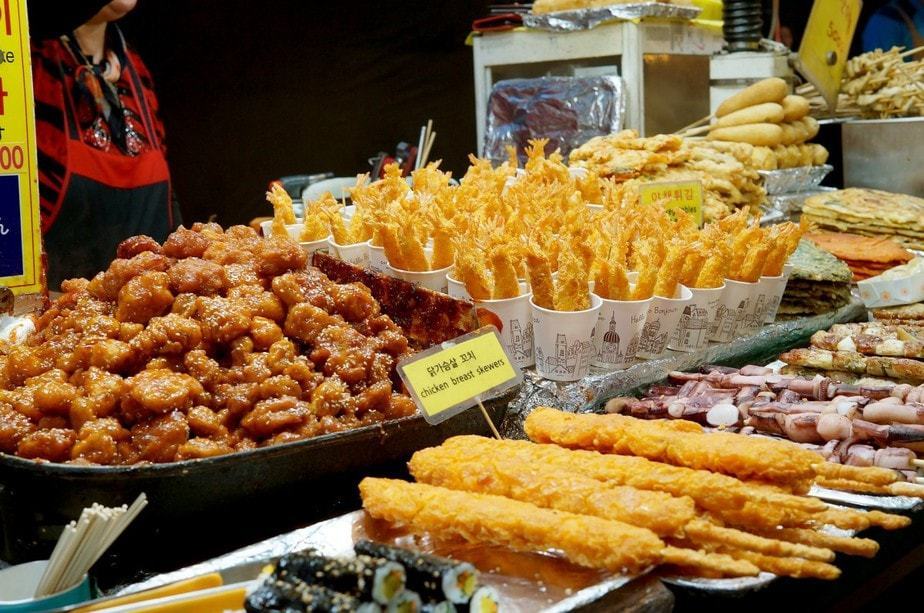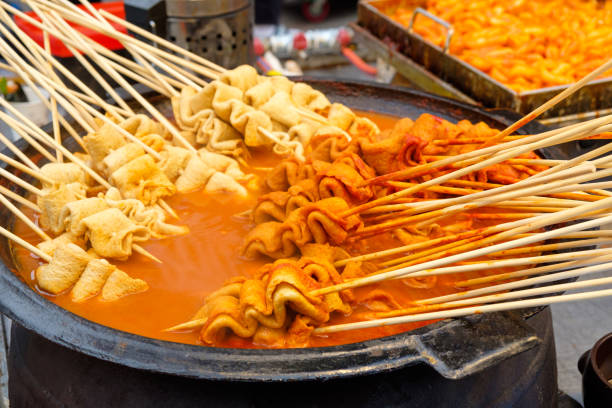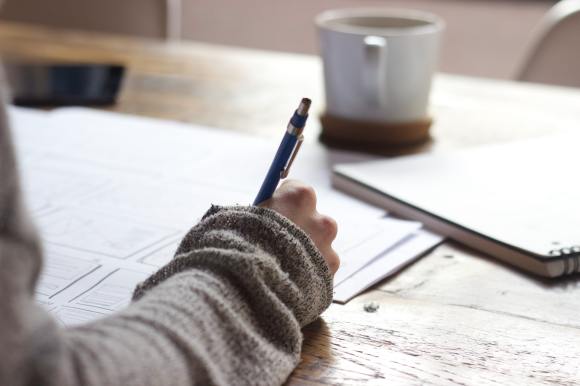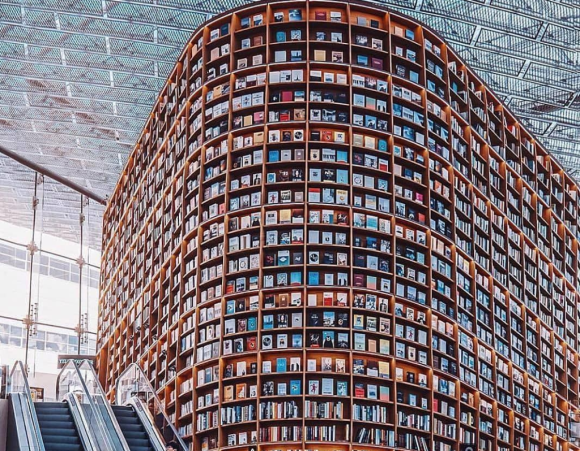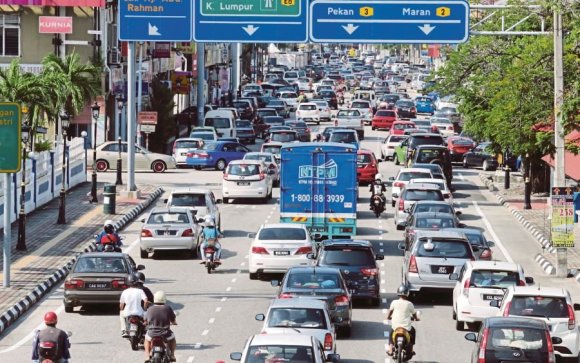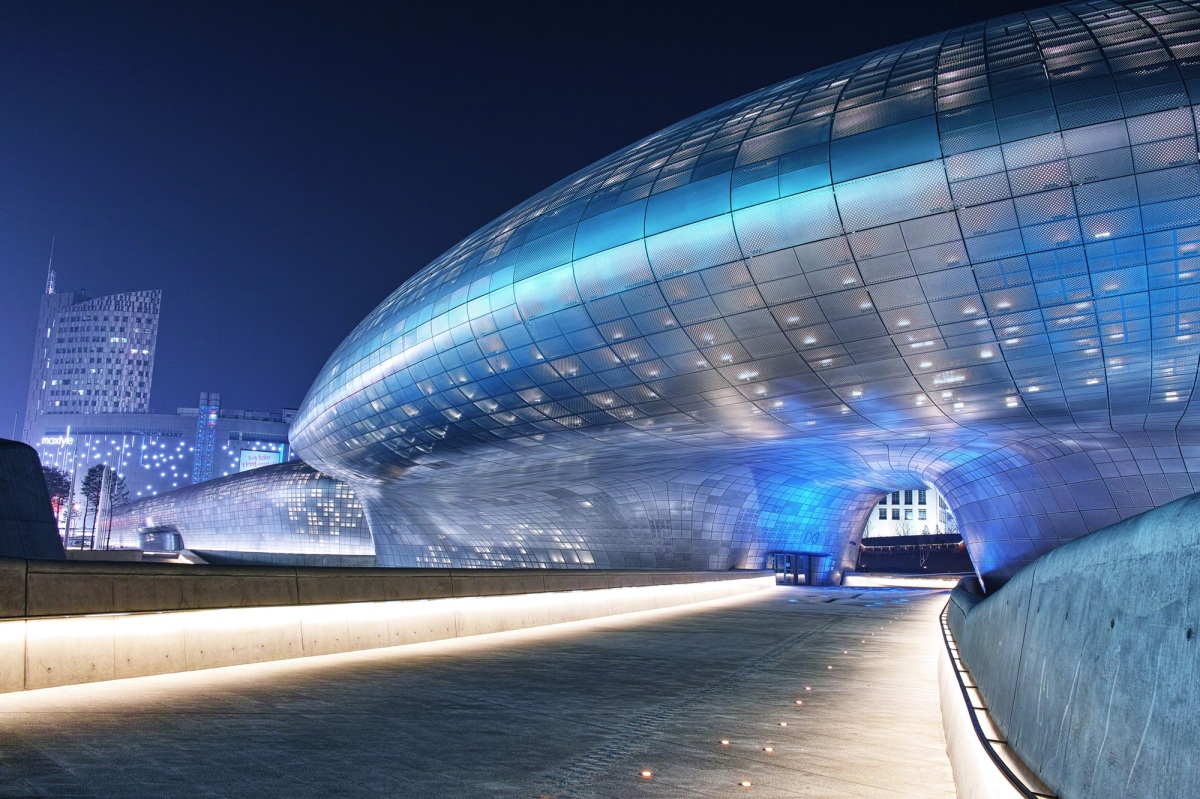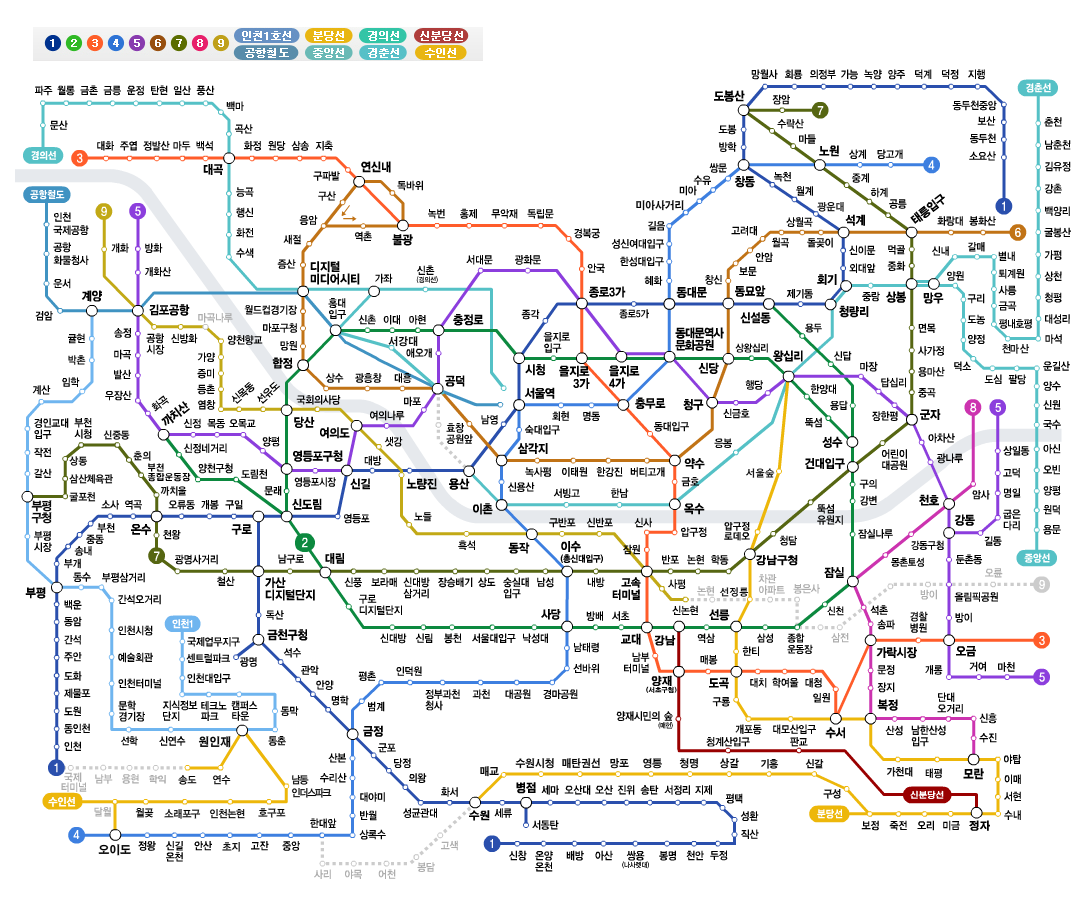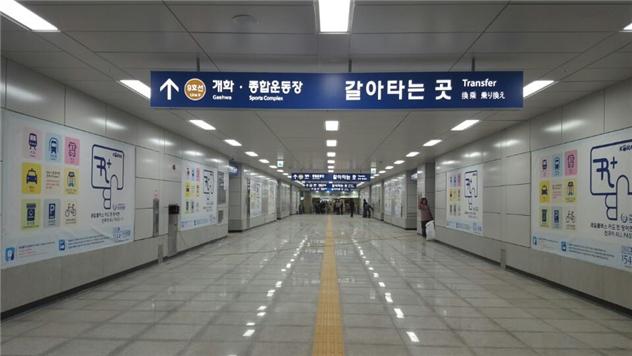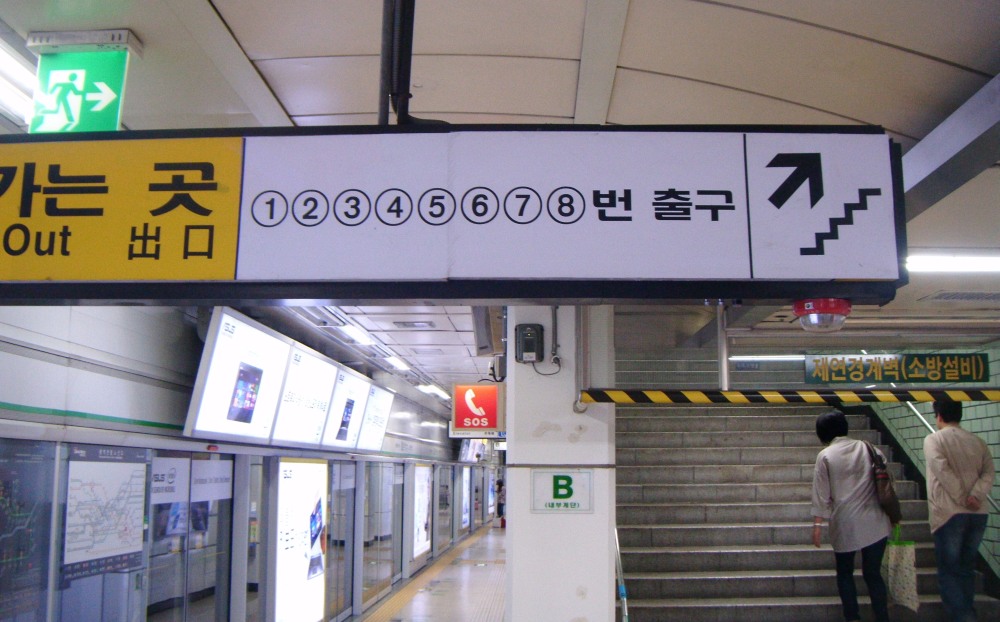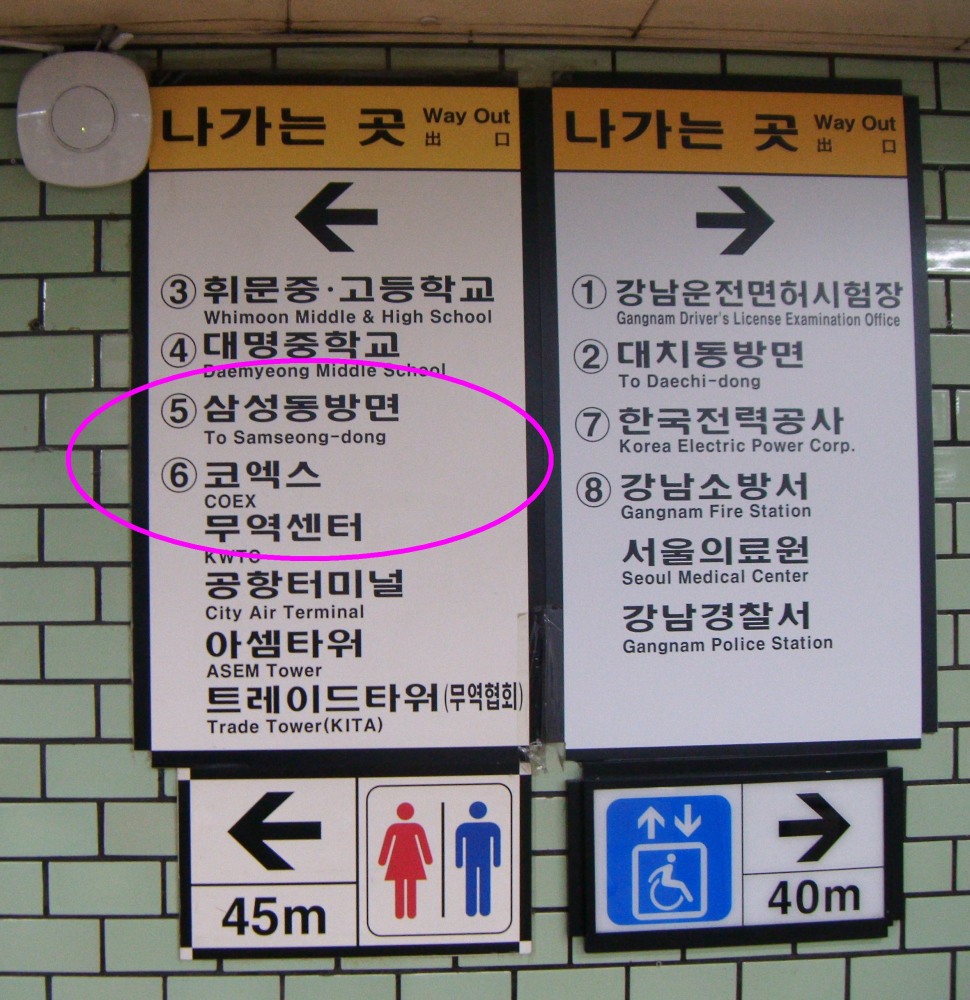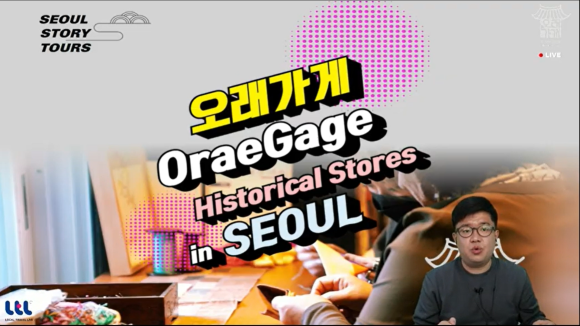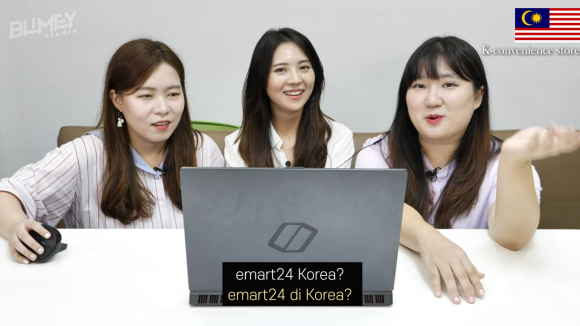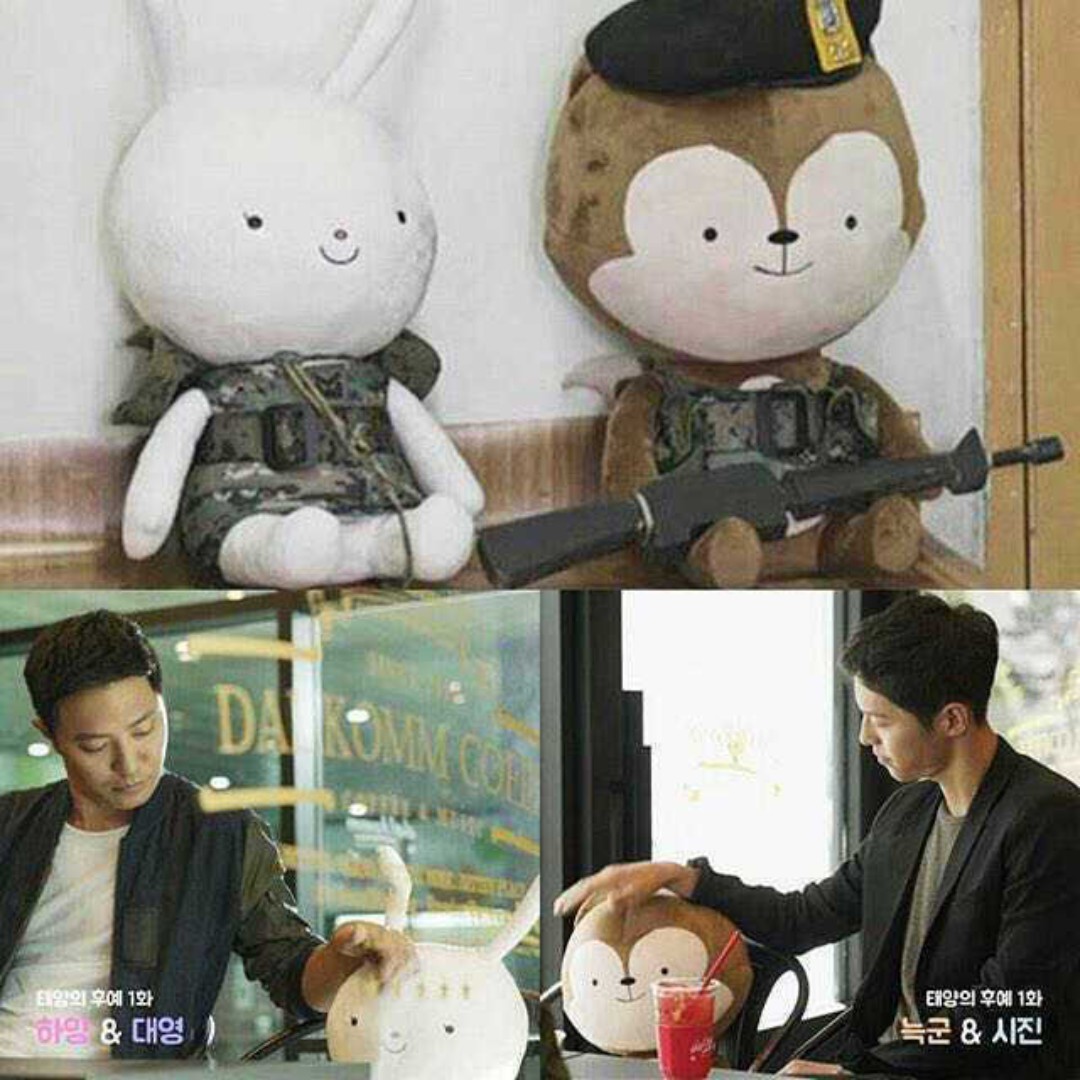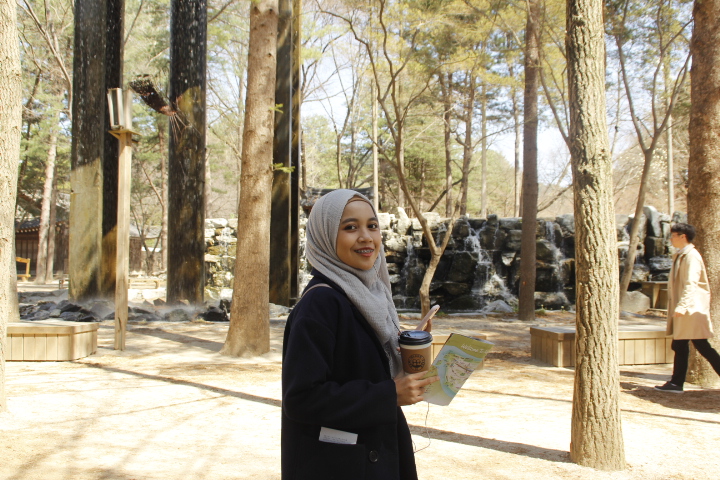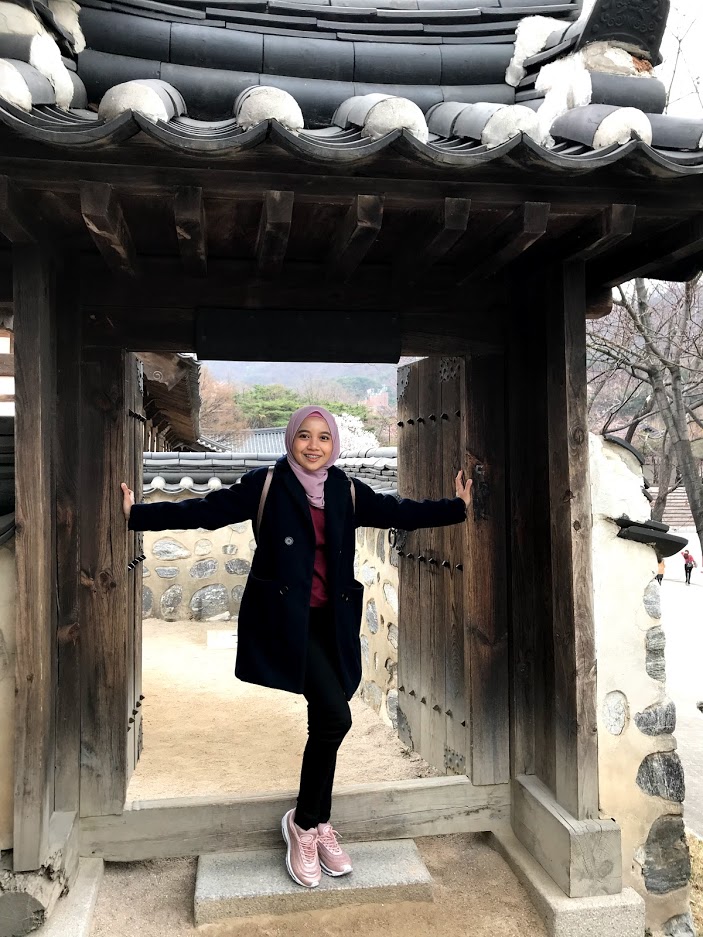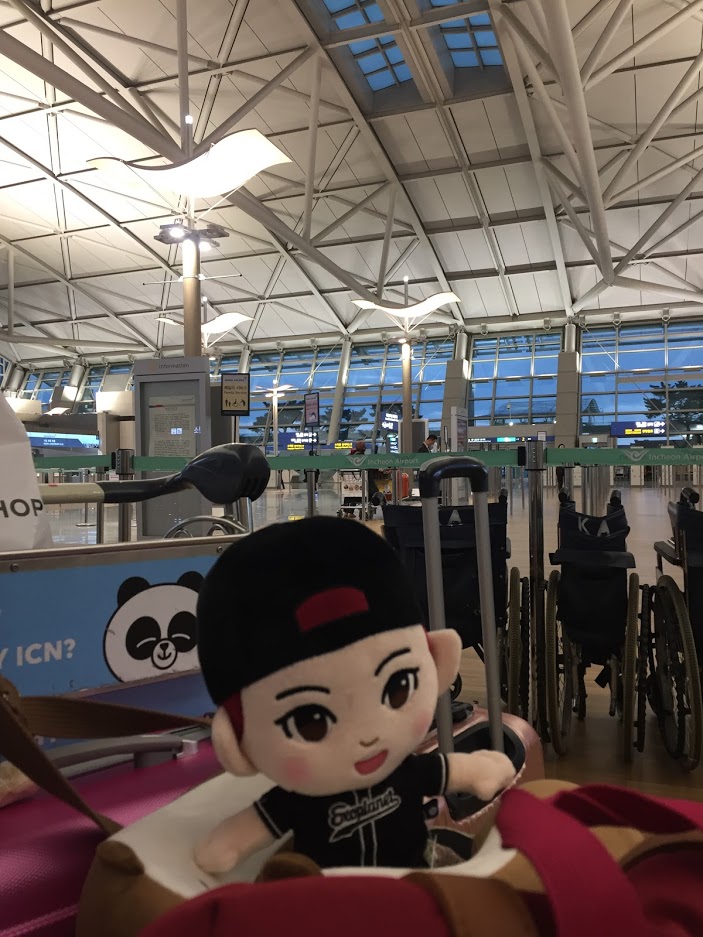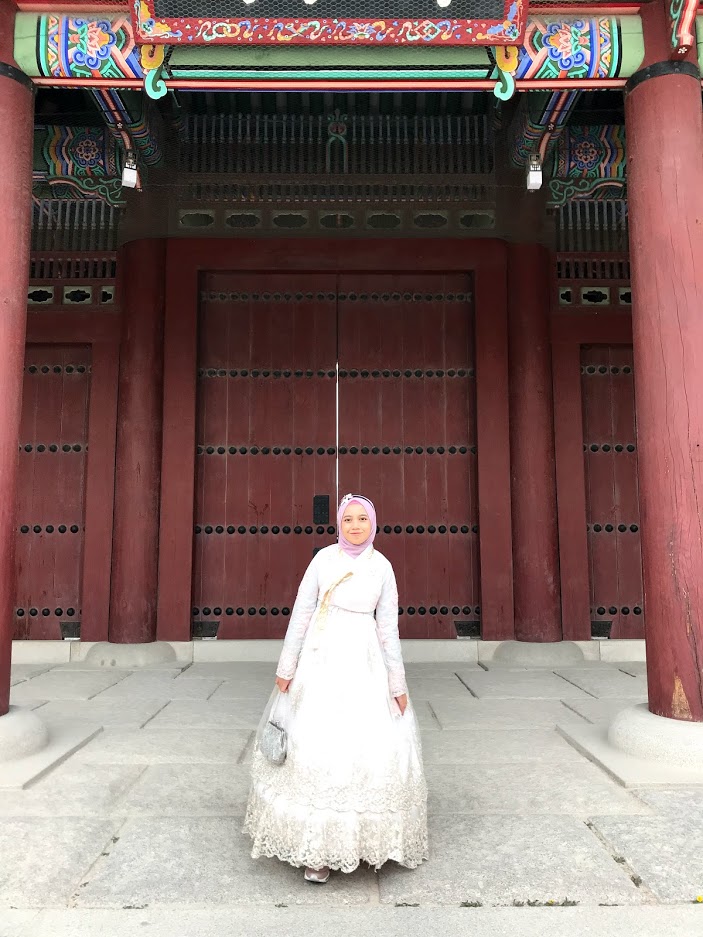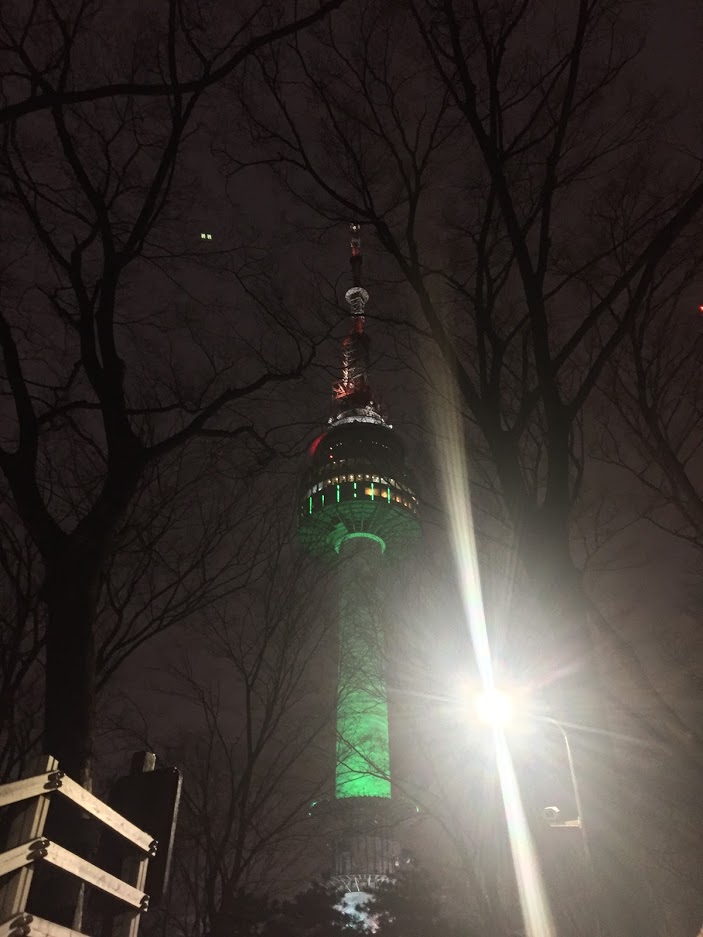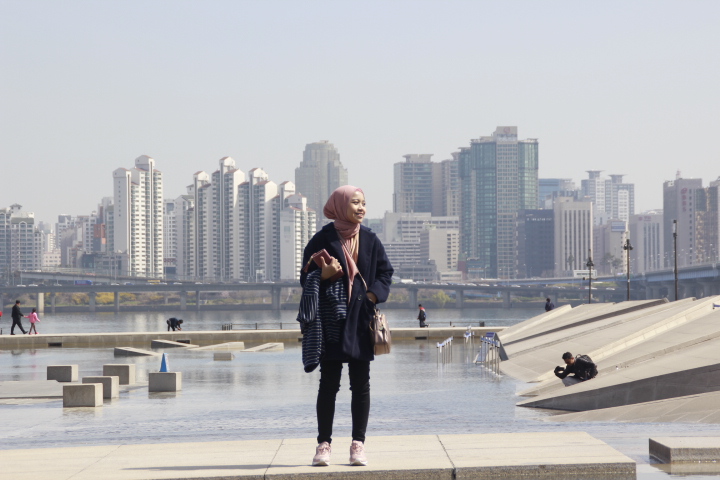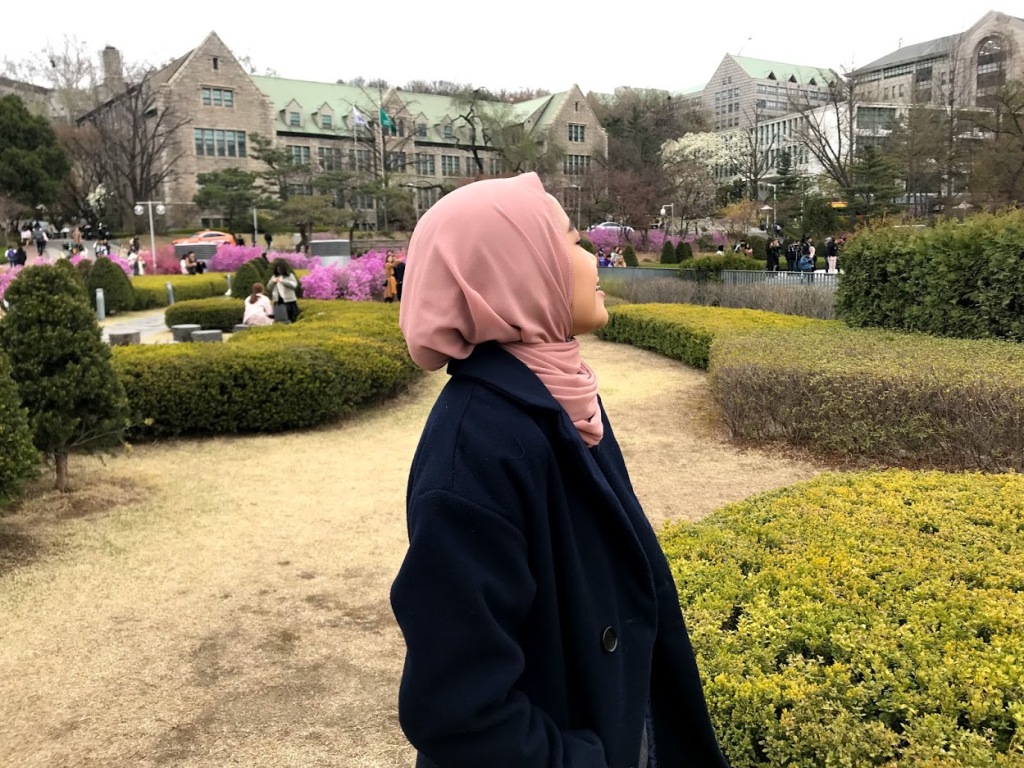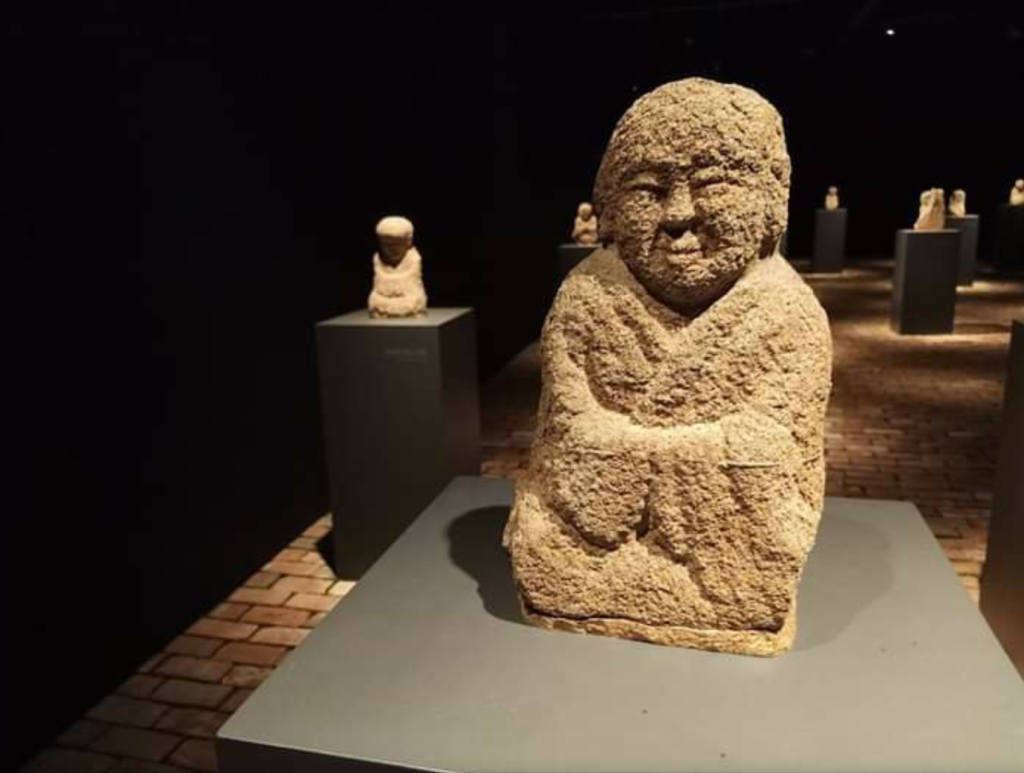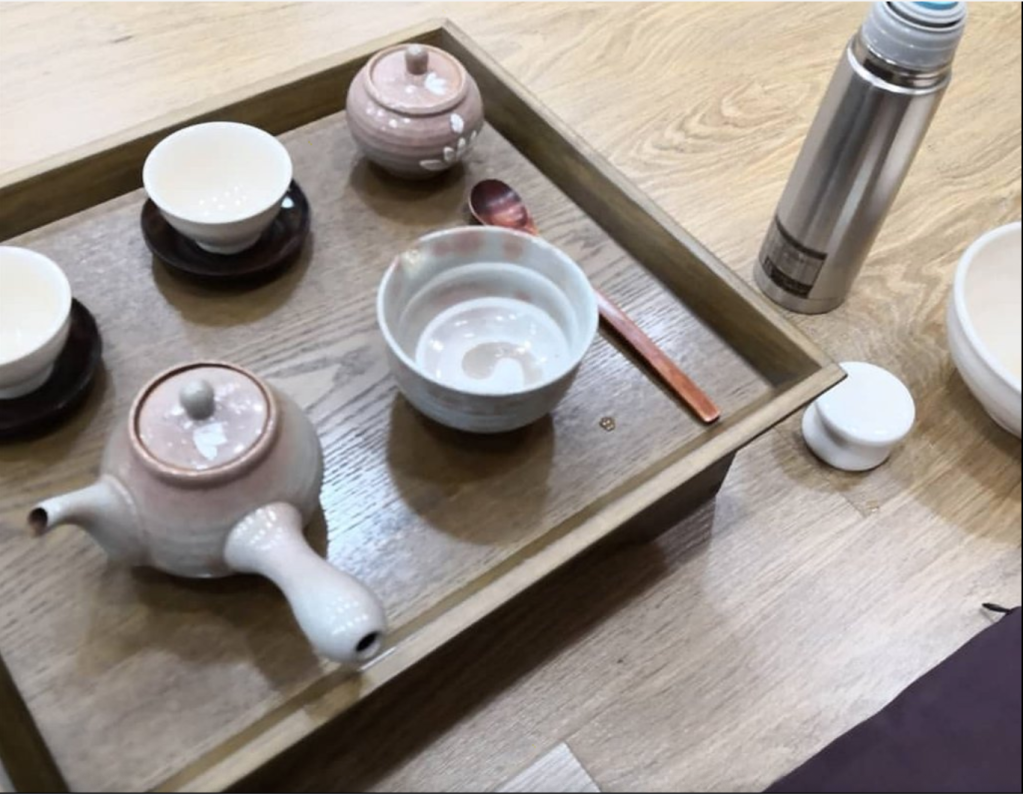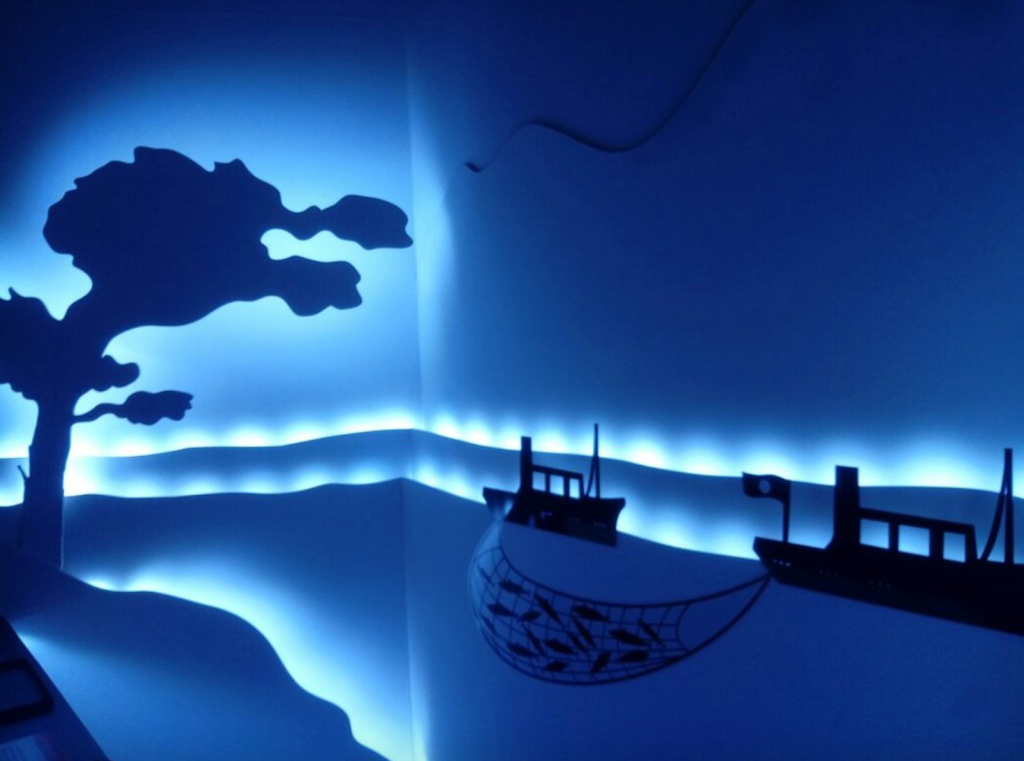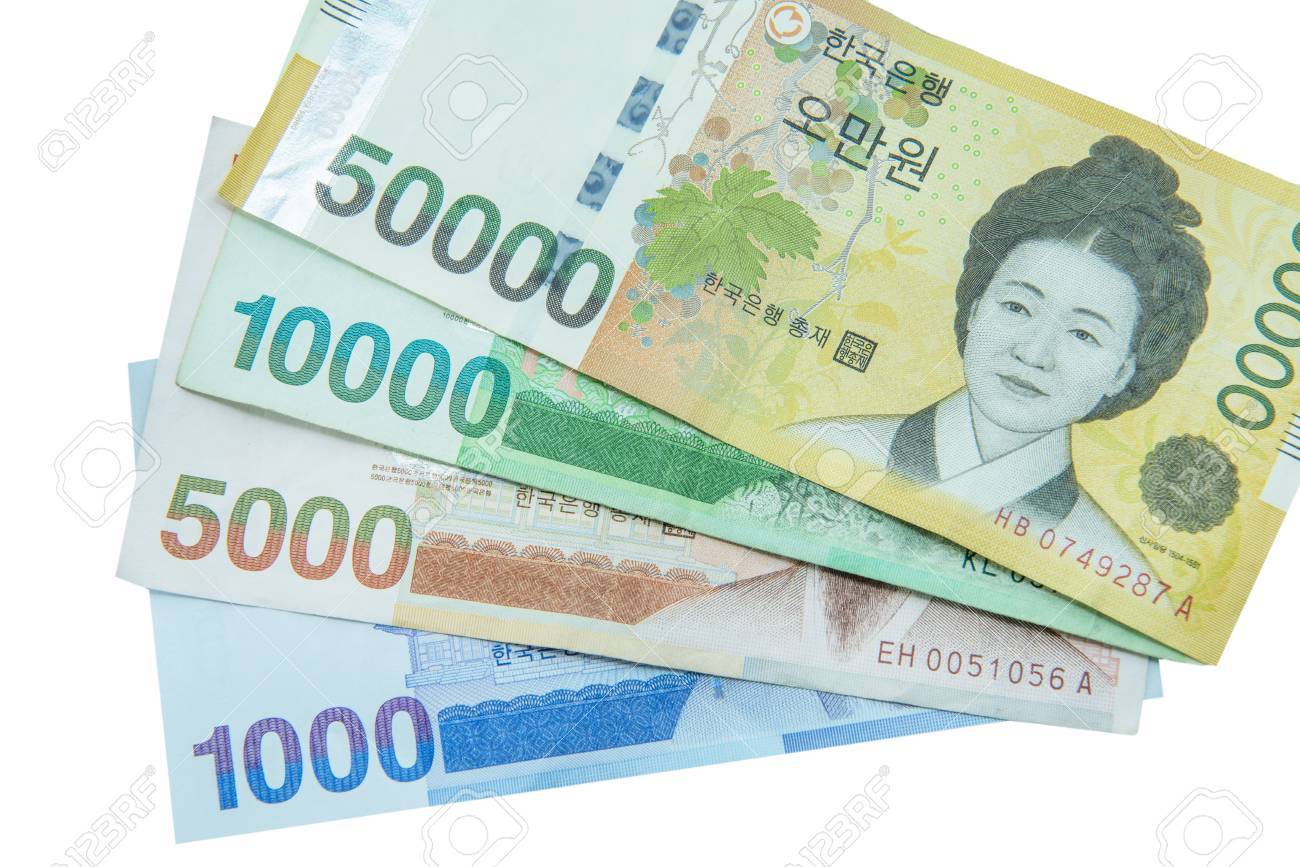
Eating is a survival instinct wherever we are! You will definitely suffer if you can’t even order something to eat while you were travelling in a foreign country. Korean foods are also one of the best cuisine in the world, we must at least learn some useful Korean phrases so we can get the food we want successfully!
Situation 1: You want to order a hotteok from a stall at Myeongdong street

Hotteok is a common street food which is similarly like a sweet chewy fried pancake. By default, they have filling made of peanuts and sugar.
To order a hotteok,
You : 안녕 하세요! 호떡 하나 주세요.
an-nyeong ha-sae-yo! Ho-tteok ha-na chu-se-yo
The expression – 주세요(ju-se-yo) means ‘please give me…’. And 하나 (ha-na) here means ‘one’ which is in the traditional Korean numbering system. If you want to have 2 or 3 hotteok, you can replace 하나 with 두게 (du-ge) or 세게 (se-ge). You can change 호떡 into other foods you want to have when you want to order other street foods, such as 떡볶기 (tteokbokki), 오묵 (o-muk, fish cake), 계란빵 (gye-ran-bbang, egg bread).
Eg. 떡볶기 주세요. (tteokbokki ju-se-yo)
오묵 하나 주세요. (o-muk ha-na ju-se-yo)
계란빵 두게 주세요. (gye-ran-bbang du-ge ju-se-yo)
Situation 2: You want to order a coffee in a café down at Hongdae
A hot coffee in the morning definitely is the best to start the morning. Koreans really love coffee, so it’s not difficult at all to find cafes for you to have a coffee boost.

While you enter the café and approached to the barista,
Barista: 어서 오세요! 드시고 가시나요?
(eo-seo o-se-yo! deu-si-go ga-si-na-yo?)
Welcome! Are you serving here?
You: 네. 커피 한잔 주세요.
(ne. keo-pi han-jan ju-se-yo)
Yes. Could you give me a coffee please?
Barista: 따뜻한 걸로 드리까요? 차가운 걸로 드리까요?
(dda-ddeut-han geol-lo deu-ri-gga-yo? cha-ga-un geol-lo deu-ri-gga-yo?)
Would you like it hot? Would you like it cold?
You: 따뜻한게 주세요.
(dda-ddeut-ha-ge ju-se-yo)
Please give me a hot one.
Barista: 더 필요하신거 있어요?
(deo pil-yo-ha-sin-geo i-sseo-yo)
Is there any other thing you need?
Me: 아니요. 그거며 되요.
(a-ni-yo. geu-geo-myeon dwae-yo)
No. That will be enough.
Barista: 삼천 오백원 입니다.
(sam-cheon o-baek-won ib-ni-da)
That would be 3500 won.
— Given the cash/card —
Barista: 영수증 드릴까요?
(yeong-su-jeung deu-ril-gga-yo)
Do you need a receipt?
Me: 아니요. 감사합니다.
(a-ni-yo. kam-sa-hap-ni-da)
No. Thank you.
From the conversation above, there are some very useful phrases we can point out here:
- 따뜻하다 (ddat-ddeut-ha-da) (verb) – to be hot (suitable to describe for drinks)
Eg. 이 차는 따뜻해요. (i cha-neun dda-ddeut-hae-yo)
This tea is hot. - 차갑다 (cha-gap-da) (verb) – to be cold/chilly/icy
Eg. 이 커피는 차가워요. - 영수증 (yeong-su-jeung) : receipt
Drinks that you can order in cafe, in Korean:
- 아메리카노 (a-me-ri-ka-no) – Americano
- 카페라테 (ka-pe-la-te) – caffe latte
- 카푸치노 (ka-pu-chi-no) – cappuccino
- 우유 (u-yu) – milk
- 녹차 (nok-cha) – green tea
- 핫쵸코 (hat-cho-ko) – hot chocolate
Situation 3: Ordering authentic foods in Korean restaurant
If you want to get some main dishes for your lunch or dinner, you will have to find the local Korean food restaurants, or often they called as 식당 (sik-dang).
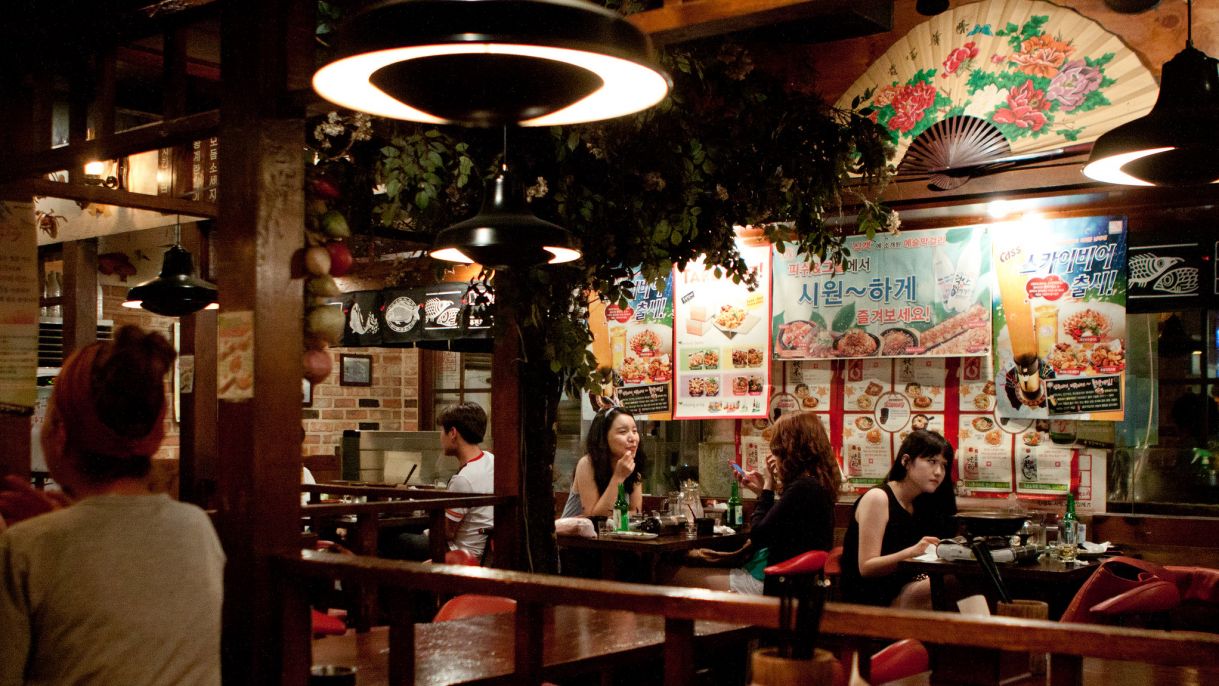
As you enter the restaurant and meet the waiter,
Waiter: 어서 오세요! 몇 분이세요?
(eo-seo o-se-yo! myeot bun-i-se-yo)
Welcome! How many people?
You: 두 명이요.
(du myeong-i-yo)
Two people, please.
Waiter: 이쪽으로 안내해 드릴게요.
(i-jjok-eu-ro an-nae-hae deu-ril-ge-yo)
Please follow me inside.
As you have seated,
You: 메뉴판 좀 주세요.
(me-nyu-pan jom ju-se-yo)
Could you give me the menu?
Waiter: 주문하시겠어요?
(ju-mun-ha-si-ge-seo-yo)
Would you like to take the order?
You: 여기 뭐가 맛있어요?
(yeo-gi bwo-ga mas-si-seo-yo)
What is delicious here?
Waiter: 여긴 비빔밥은 인기가 많아요.
(yeo-gin bi-bim-bap-eun in-gi-ga man-a-yo)
The bibimbap here is popular.
You: 비빔밥 두인분 주세요.
(bi-bim-bap du-in-bun ju-se-yo)
Please give me 2 servings of bibimbap.
Waiter: 네. 잠시만 기다려 주세요.
(ne. jam-si-man gi-da-ryeo ju-se-yo)
Ok. Please wait for awhile.

Aside from the conversation above, there are also other useful sentences we could use while we are taking order/waiting for the food.
If you would like your food to be less spicy:
덜 맵게 해 주세요. (deol maeb-ge hae ju-se-yo)
If you want to remind that your order has not arrived:
저희 주문한 음식이 아직 안 나왔어요.
(jeo-ui ju-mun-han eum-sik-i a-jik an na-wa-seeo-yo)
If you want to ask where is the washroom:
화장실은 어디에 있어요? (hwa-jang-sil-eun eo-di-e i-sseo-yo)
If you want to pay after you finish your meal:
계산할게요. (gye-san hal-ge-yo)
